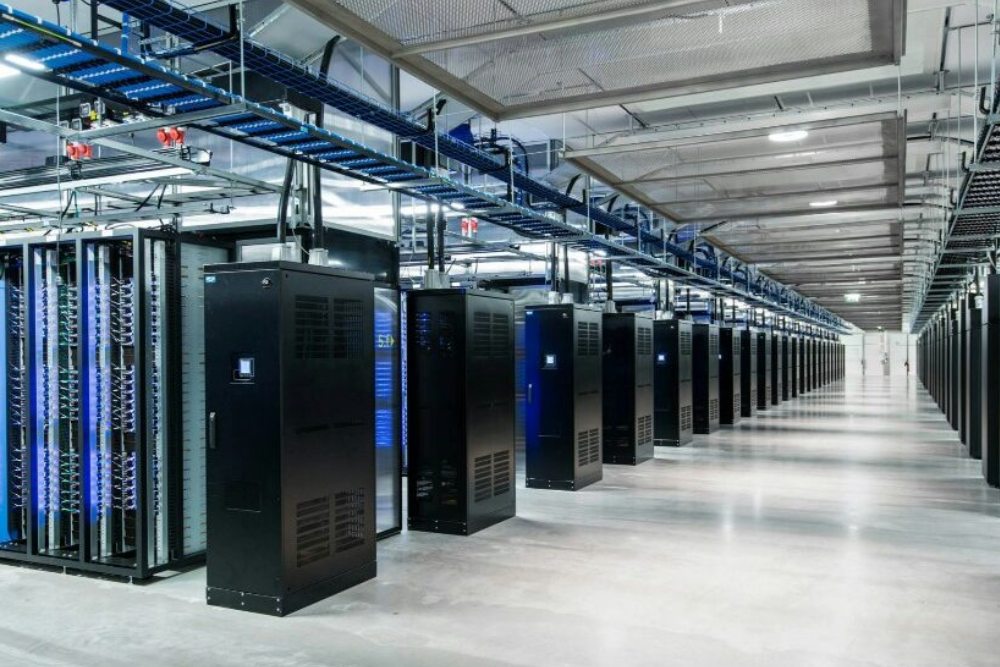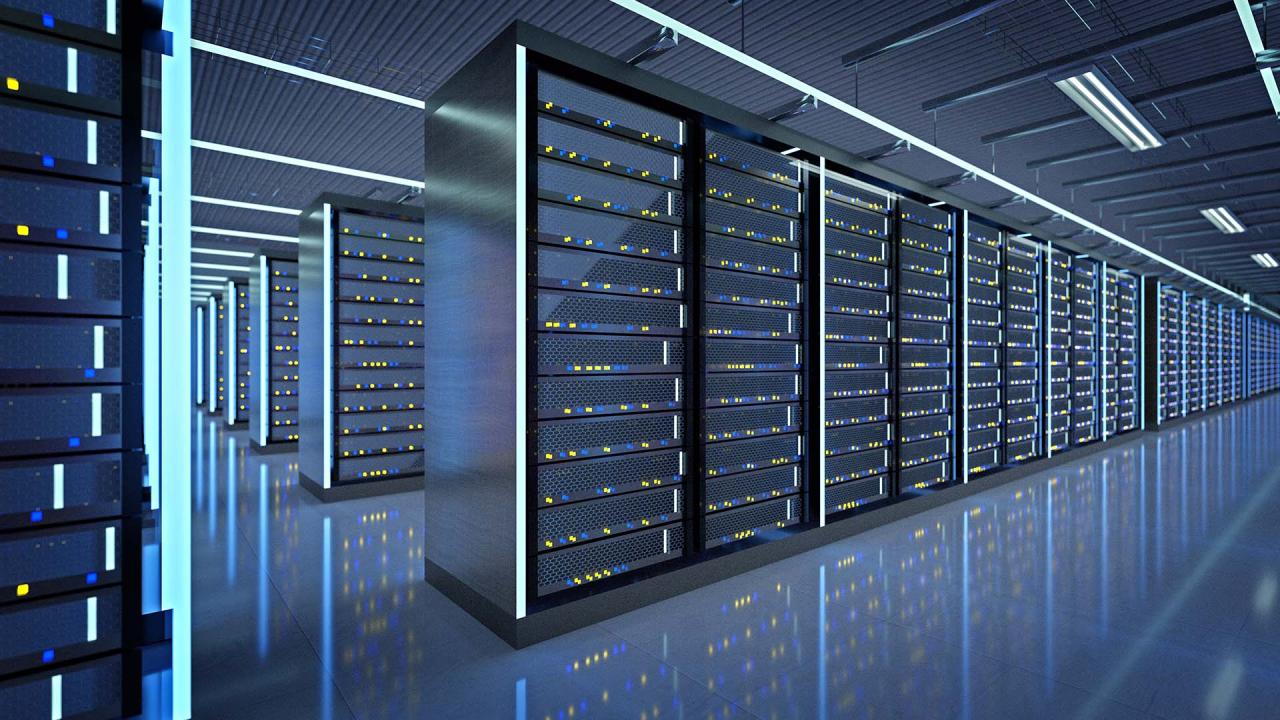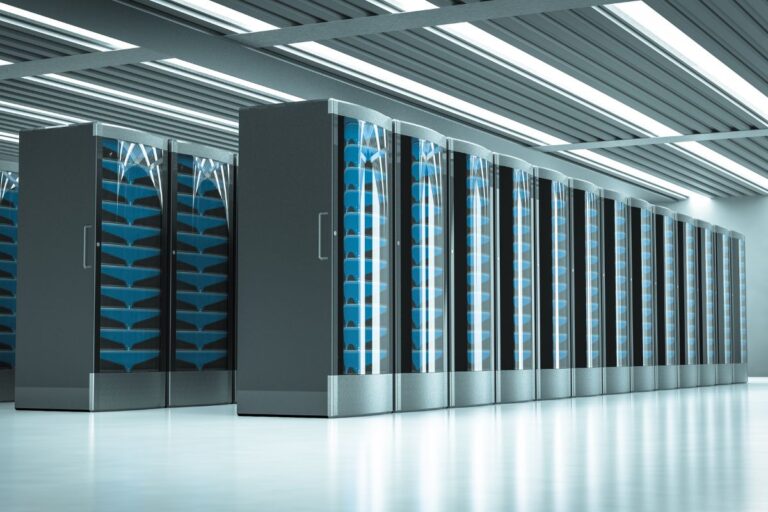In the relentless pursuit of a greener, more powerful digital future, data center efficiency has emerged as a paramount concern. These vast digital engines, the literal heart of the internet and modern enterprise, consume immense amounts of energy. However, through groundbreaking innovations in design, technology, and operations, the efficiency of data centers is not just improving; it’s soaring to unprecedented heights, fundamentally redefining their environmental footprint and economic viability. This transformation is crucial for sustaining the exponential growth of data, artificial intelligence, and cloud services without exhausting our planet’s resources.
The Imperative of Efficiency

For decades, the primary focus of data centers was raw processing power and storage capacity. While these remain critical, the sheer scale of global data growth, coupled with escalating energy costs and increasing environmental awareness, has shifted the spotlight squarely onto efficiency. The proliferation of powerful, energy-hungry technologies like AI servers, high-density storage, and hyperscale cloud platforms means that even marginal improvements in efficiency can lead to massive savings in both operational expenditure and carbon emissions.
Efficient data centers aren’t just a “nice-to-have”; they’re a necessity for long-term sustainability and profitability. They represent the nexus where economic prudence meets environmental responsibility, ensuring that the digital infrastructure supporting our world is both robust and responsible.
Pillars of Efficiency
Achieving remarkable data center efficiency is not about a single silver bullet; it’s a multi-faceted endeavor encompassing everything from the physical building to the software running within it. A holistic approach, integrating design, hardware, cooling, power, and intelligent management, is key.
A. Advanced Design and Architecture:
- Modular and Scalable Designs:
- Building Block Approach: Modern data centers are moving away from monolithic, fixed designs towards modular, “building block” architectures. This allows for rapid scaling of capacity as needed, preventing over-provisioning and ensuring resources are utilized efficiently. Modules can be pre-fabricated and quickly deployed, reducing construction waste and time.
- Containerized Data Centers: The concept of containerized or “micro-data centers” allows for rapid deployment of computing power closer to the edge, reducing the need for massive, centralized facilities and their associated energy losses over long distances. These self-contained units are optimized for energy efficiency.
- Location and Environment Optimization:
- Climate Advantage: Strategically locating data centers in cooler climates (e.g., Nordic countries, Canada) allows for greater reliance on free cooling (using ambient air or water), dramatically reducing the energy needed for mechanical refrigeration.
- Renewable Energy Proximity: Positioning data centers near abundant renewable energy sources (hydroelectric, wind, solar farms) enables them to be powered almost entirely by clean energy, vastly reducing their carbon footprint.
- Hot/Cold Aisle Containment:
- Airflow Management: This foundational efficiency technique involves physically separating hot exhaust air from cold intake air within server rooms. By containing hot aisles and cold aisles, air mixing is minimized, allowing cooling systems to operate more effectively at higher temperatures, reducing fan energy consumption.
- Computational Fluid Dynamics (CFD): Advanced modeling tools like CFD are used during design to simulate airflow and heat distribution within the data center, identifying and eliminating hotspots and optimizing airflow paths for maximum cooling efficiency.
B. Revolutionary Cooling Technologies:
Cooling is often the largest consumer of energy in a data center after IT equipment itself. Innovations in this area are paramount.
- Liquid Cooling Systems:
- Direct-to-Chip Cooling: Instead of cooling the entire server room, this method brings coolant (usually water or a dielectric fluid) directly to the hottest components like CPUs, GPUs, and memory. This is far more efficient than air, as liquid has a much higher thermal conductivity. It allows for higher power densities and maintains optimal chip temperatures, boosting performance and lifespan.
- Immersion Cooling: Servers are fully submerged in a non-conductive dielectric fluid, which directly absorbs heat from components. This offers unparalleled cooling efficiency, enabling extreme server densities and often eliminating the need for traditional CRAC (Computer Room Air Conditioner) units entirely. It can also reduce noise and dust.
- Rear Door Heat Exchangers: These units attach to the back of server racks and use chilled water to capture heat directly from server exhaust air, preventing it from mixing with the ambient data center air.
- Free Cooling and Evaporative Cooling:
- Economizers: These systems leverage natural outdoor conditions to cool the data center. Air-side economizers use cool outside air directly, while water-side economizers use cool water from external sources (e.g., rivers, lakes, cooling towers) in a heat exchange process.
- Evaporative Cooling (Swamp Coolers): These systems cool air by evaporating water, a highly energy-efficient process, especially in dry climates. They consume less energy than traditional compressor-based refrigeration.
- Smart Cooling Control Systems:
- AI/ML Driven Optimization: Artificial intelligence and machine learning algorithms continuously monitor hundreds of data points (temperature, humidity, airflow, server loads) across the data center. They use this data to predict cooling needs and dynamically adjust cooling systems (fan speeds, chiller setpoints, pump rates) in real-time, often anticipating demand shifts before they occur. This prevents overcooling and significantly reduces energy waste.
C. Optimized Power Management:
Efficient power delivery from the grid to the chip is crucial for minimizing energy losses.
- High-Efficiency Power Supplies (PSUs):
- 80 PLUS Certifications: Server power supplies are rated for efficiency (e.g., 80 PLUS Platinum, Titanium), indicating how much AC power is converted to usable DC power. Higher efficiency means less energy lost as heat during conversion. Next-gen PSUs are pushing the boundaries of these ratings.
- Higher Voltage DC Distribution: Distributing power in data centers using higher voltage DC (Direct Current) rather than AC (Alternating Current) can reduce conversion losses, as IT equipment ultimately uses DC power internally. This simplifies the power chain and enhances efficiency.
- Uninterruptible Power Supply (UPS) Innovations:
- Modular and Scalable UPS Systems: Modern UPS systems are designed to be modular, allowing capacity to be added or removed as needed, preventing the inefficiency of running oversized UPS units at low loads.
- Lithium-Ion Batteries: Replacing traditional lead-acid batteries with Lithium-Ion in UPS systems offers a smaller footprint, longer lifespan, faster charging, and often more efficient operation.
- Flywheel UPS: For short-term power interruptions, flywheels offer a kinetic energy storage solution that can be more efficient and require less maintenance than traditional batteries.
- Power Distribution Unit (PDU) Optimizations:
- Intelligent PDUs: These devices provide granular monitoring of power consumption at the rack and even individual server level, enabling precise tracking of energy usage and identification of inefficient equipment. They often include remote power control capabilities.
D. Intelligent IT Hardware and Software:
The equipment inside the data center also plays a massive role in overall efficiency.
- Energy-Efficient Processors:
- Purpose-Built Silicon: Chip manufacturers (Intel, AMD, NVIDIA, as well as cloud providers like Google and Amazon with their custom silicon) are continuously designing processors (CPUs, GPUs, ASICs, DPUs) that offer higher performance per watt. This means more work is done with less energy.
- Power Management Features: Modern processors incorporate sophisticated power management features, dynamically adjusting clock speeds and voltage based on workload to minimize consumption during idle or low-utilization periods.
- Optimized Storage Solutions:
- Solid State Drives (SSDs): Replacing traditional Hard Disk Drives (HDDs) with SSDs significantly reduces power consumption for storage, as SSDs have no moving parts. NVMe SSDs offer even greater performance and efficiency.
- Data Tiering and Archiving: Intelligent data management software automatically moves less frequently accessed data to lower-cost, lower-power storage tiers (e.g., object storage, tape for archives) while keeping frequently accessed “hot” data on high-performance, energy-efficient storage.
- Data Deduplication and Compression: Reducing the amount of data stored through deduplication and compression directly translates to less storage hardware needed, thereby reducing power and cooling requirements.
- Virtualization and Containerization:
- Server Consolidation: Virtualization allows multiple virtual machines (VMs) to run on a single physical server, dramatically increasing server utilization rates and reducing the number of physical servers needed, leading to significant power and cooling savings.
- Container Efficiency: Container technologies (e.g., Docker, Kubernetes) offer an even lighter-weight form of virtualization, allowing for greater application density per server and more efficient resource allocation compared to traditional VMs.
- Software-Defined Everything (SDx):
- Dynamic Resource Allocation: Software-defined networking (SDN) and software-defined storage (SDS) enable dynamic provisioning and re-allocation of network and storage resources based on real-time demand, preventing over-provisioning and ensuring optimal resource utilization.
- Workload Orchestration: Advanced orchestration platforms intelligently schedule workloads across the most efficient servers and resources, spinning up and down compute instances as needed to match demand, minimizing idle power consumption.
Measuring and Benchmarking Efficiency

The industry standard for measuring data center energy efficiency is Power Usage Effectiveness (PUE).
A. Understanding PUE:
- Formula: PUE is calculated as:Total Facility Energy/IT Equipment Energy
- Total Facility Energy: Includes power used by IT equipment (servers, storage, networking) plus all supporting infrastructure (cooling, lighting, UPS losses, etc.).
- IT Equipment Energy: Power consumed solely by the computing, storage, and networking hardware.
- Interpreting PUE:
- A perfect PUE would be 1.0 (meaning all energy goes directly to IT equipment with no overhead).
- A PUE of 2.0 means that for every watt consumed by IT equipment, another watt is used by the supporting infrastructure.
- Lower PUE is Better: The goal is to get PUE as close to 1.0 as possible. Leading hyperscale data centers are achieving PUEs in the 1.05 to 1.2 range, a testament to significant efficiency gains.
B. Beyond PUE:
While PUE is valuable, a holistic view of efficiency often includes:
- Carbon Usage Effectiveness (CUE): Measures the total carbon emissions relative to the IT equipment energy, providing a direct link to environmental impact.
- Water Usage Effectiveness (WUE): Crucial for data centers using evaporative or liquid cooling, WUE measures the amount of water consumed (in liters) per kilowatt-hour of IT energy.
- Energy Reuse Effectiveness (ERE): Quantifies how much of the waste heat from the data center is captured and reused for other purposes (e.g., district heating, agricultural use).
The Broader Impact for Sustainability and Economics
The soaring efficiency of data centers has profound implications beyond just the tech industry itself.
A. Environmental Stewardship:
- Reduced Carbon Footprint: By optimizing energy consumption and increasingly relying on renewable energy sources, data centers are significantly reducing their greenhouse gas emissions, contributing to global climate goals.
- Water Conservation: Advanced cooling techniques like closed-loop liquid cooling and innovative water management strategies are minimizing the water footprint of these massive facilities.
- Waste Reduction: Modular designs, longer hardware lifespans due to better cooling, and responsible recycling programs for IT equipment are contributing to a more circular economy in the digital sector.
B. Economic Benefits:
- Lower Operational Costs: Energy is a major operational expense for data centers. Efficiency gains directly translate into substantial reductions in electricity bills, improving profitability.
- Increased Compute Density: More efficient cooling and power delivery allow data centers to pack more computing power into the same physical space, maximizing return on real estate investment.
- Competitive Advantage: Companies with highly efficient data centers can offer more competitive pricing for cloud services and sustain their growth with a lower cost base.
- Enhanced Reliability: Efficient systems often run cooler and are less prone to failure, leading to higher uptime and reduced maintenance costs.
The Future Horizon
The pursuit of data center efficiency is an ongoing journey, with exciting developments on the horizon.
A. Quantum Computing Integration:
While still experimental, quantum computers are inherently energy-efficient for specific tasks. Their eventual integration into data centers could offer a pathway to solving certain complex problems with vastly less energy than classical supercomputers.
B. Further AI-Driven Optimization:
The application of AI to manage and optimize data center operations will become even more sophisticated, leading to fully autonomous, self-healing, and self-optimizing facilities that can predict and adapt to conditions with unparalleled precision.
C. Carbon Capture and Beyond:
Research is exploring technologies that could potentially capture carbon emissions directly from data center operations, moving towards truly carbon-negative facilities.
D. Direct Energy Harvesting:
Future data centers might explore ways to harvest energy directly from surrounding environmental elements or even from waste heat, contributing back to the grid.
E. New Materials and Manufacturing:
Innovations in materials science will yield components that are inherently more energy-efficient and durable, from new types of semiconductors to advanced heat sinks.
Challenges on the Path to Ultimate Efficiency
Despite the remarkable progress, several challenges remain in the quest for ultimate data center efficiency.
A. Retrofitting Legacy Infrastructure:
Many older data centers were not designed with modern efficiency in mind. Retrofitting these facilities with new cooling systems or advanced power architectures can be complex and costly.
B. Complexity of Integration:
Integrating diverse efficiency technologies (liquid cooling, AI optimization, renewable energy sources) into a seamless, cohesive system requires sophisticated engineering and management.
C. Upfront Investment:
Many of the most advanced efficiency solutions, while offering significant long-term ROI, require substantial upfront capital investment, which can be a barrier for some organizations.
D. Skill Gap:
Operating and maintaining highly efficient, AI-driven data centers requires specialized skills in areas like data science, thermal engineering, and advanced networking, leading to a demand for skilled professionals.
E. Dynamic Workload Management:
The highly dynamic nature of cloud workloads, with constantly fluctuating demands, makes it challenging to maintain peak efficiency at all times. Intelligent automation is key.
Conclusion
The journey of data center efficiency is a testament to human ingenuity and our commitment to building a more sustainable digital world. From the architectural blueprints to the intricate software algorithms, every aspect of these digital powerhouses is being re-engineered to consume less, reuse more, and perform better. The ongoing advancements in cooling, power management, and intelligent automation are not merely incremental; they represent a fundamental shift that is allowing data center efficiency to truly soar. This remarkable progress ensures that as our digital universe expands, its foundation remains robust, economically viable, and, critically, environmentally responsible, powering the innovations of tomorrow without compromising the planet’s future.



